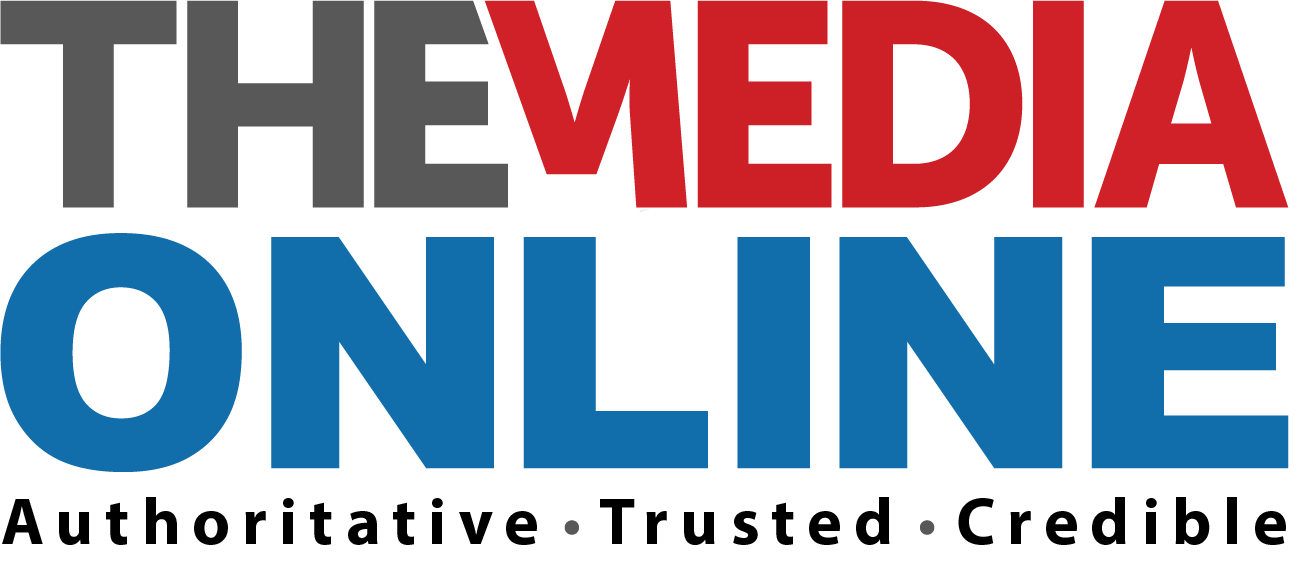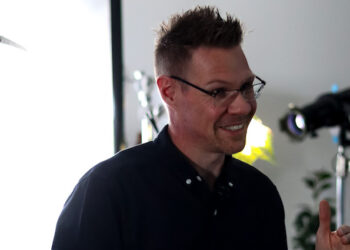A week may be a long time in politics, but when it comes to digital migration, it’s a different story. The three year period allocated for the migration from analogue to digital terrestrial broadcasting is ambitious by anyone’s standards. “It’s safe to say anything under five years is very ambitious,” says Lara Kantor. “The UK has been going for 12 years now and they’ve only begun to switch off (the analogue signal in) some of the towns.”
As The Media predicted (“Digital TV by Christmas? Dream on…”, August 2008) South African broadcasters failed to launch commercial digital terrestrial television (DTT) services on November 1 – the date on which the digital signal was switched on in South Africa.
Kantor says the date was first determined by Cabinet.
“Towards the beginning of this year, it became apparent to the SABC that there would be great difficulty in meeting it.
Government hadn’t finalised their policy (it has since been finalised), and because they hadn’t finalised it, ICASA (the Independent Communications Authority of South Africa) hadn’t finalised the regulatory framework or a frequency plan.
“In simple terms, a broadcaster cannot broadcast on digital unless they have a licence that permits them to do that. None of that was in place; let alone an agreed standard for set-top boxes (decoders) or a manufacturing process for the boxes.”
Kantor says the SABC’s view was that, although a commercial DTT launch would not be possible in November, it was necessary to “get something going”. And so the DTT trials were born: a free-to-air trial (the SABC and e.tv) is being conducted in Johannesburg, Pretoria and Durban, and a pay-TV trial (M-Net terrestrial) in these cities and in Cape Town.
“We’re doing audience research on how people relate to the (set-top) box; if they find the remote control easy to use; we’re testing the electronic programme guide; identifying installation difficulties and so forth. We feel very strongly that this will enable us to get to a commercial launch in 2009.”
The SABC would like to see a DTT service launched in time for the Confederations Cup in June next year. “I think the three broadcasters agree that we are looking to launch in June, July or August.”
Kantor says their research shows that three factors drive a switchover: A good content proposition, the price of the set-top box (which is needed to convert the digital signal) and marketing.
As for content, broadcasters do not yet know for how many additional channels they should prepare. (One of the advantages of digital broadcasting is that radio spectrum is freed up; therefore more channels can be accommodated.)
ICASA will determine the channel allocation. In draft regulations issued by ICASA, it has been proposed that the SABC gets seven channels (including SABC1, -2 and -3), e.tv gets two and M-Net (terrestrial) gets four (including CSN). A channel is reserved for Trinity Broadcasting and two channels are reserved for future licensees.
The SABC has a different take on the matter: “We would rather view it as video streams; therefore you have a certain technical capacity to carry a certain amount of video stream.
“During the day, you might broadcast a children’s channel. You can use the same video stream for an entertainment channel at night. Technically speaking, it’s two channels, but it uses one video stream,” says Kantor.
On the free-to-air trial, the channels are: SABC1, -2, -3, SABC Sport, SABC Education, SABC Entertainment, SABC News International, all SABC radio stations, e.tv, e.tv classic and YFM.
Says Kantor: “We’re using content repeats and archive material. And we’ve been using internal teams (to compile the channels). The sport and education is programming that is already running – which we loop. We’re using the SABC Africa team for the entertainment channel.”
Approximately 3,000 set-top boxes were acquired for the purposes of this trial. The free-to-air trial is expected to cost in excess of R15-million, with the SABC carrying “the bulk of the cost”.
Digital migration is “very costly” for broadcasters. “We have to pay two separate transmission fees (during the switchover period, both analogue and digital signals are being broadcast). We have to keep running our analogue network and pay for the new digital network.
“Investing in new content is critical for digital. Every international case study says that unless your content proposition is exciting, DTT fails. For broadcasters, that means big money.
And enormous marketing costs to try and convince consumers to do this (to acquire a set-top box).”
Kantor says the SABC does not assume that it would be able to recoup money from the new channels. “It’s going to fragment markets. Hopefully we can do some exciting things with advertising. But it’s the same free-to-air markets – it’s going to be tougher in digital than it already is.”
Some of the “exciting possibilities” of digital broadcasting, is the ability to provide data services.
“You would probably be able to play short video clips (downloaded onto your set-top box overnight) to deal with public interest messages on, for example, HIV/AIDS. We have the capacity to message the boxes, which means that you could send different messages to different groups of boxes. For example, you could target a specific message at households that speak a certain language.
“For advertisers there might be opportunities there. But this is all still very ‘pie in the sky’.
We need to get the platform up and running before we can even begin to look at this sort of thing.”
Kantor believes digital migration requires a mindshift for all concerned. “We’re going to need to collaborate on a platform.”
The idea is that competitor broadcasters would cooperate on a DTT brand, similar to the UK’s Freeview. They would have to agree on how the platform is managed.
“A key thing we’ve learned is that uptake is driven by the right number of channels. In a lot of markets they say anything less than 40 channels is not going to do it.
“That might be a bit high here – because there is not such a great uptake of pay-TV; people aren’t used to having a great number of channels. They may be satisfi ed with a smaller proposition and a strong brand.”
She says broadcasters would be “greatly assisted” by government’s subsidy scheme for set-top boxes for poor households. “That’s a huge win – that’s one of the key barriers (to uptake).”
Kantor hopes that the Digital Dzonga will publish a report by the end of the year, which will lay out a roadmap for a commercial launch next year.
“The Dzonga is not yet fully established. Our advisory council consists of me and 11 other members, representing terrestrial broadcasters, signal distributors, two local set-top box manufacturers, government, ICASA and a consumer representative. We plan to be an effective digital migration office, which will employ staff, and we hope to be up and running early next year.”
Skills
“It is probably a myth that digital migration requires a new skills set. There are areas which require new skill sets. But it’s still broadcasting. The bigger challenge is changing business processes – to go from having four channels to potentially eight to 12 channels.”
High-definition (HD) TV
“ICASA said in its draft regulations (digital terrestrial broadcasts will be in) Standard Defi nition only. I think by and large everyone will support that. If you’ve only got two multiplexes (a multiplex is a grouping of eight channels), you really don’t want to waste them on HD (which takes up more spectrum).
“I don’t think we will see HD on a terrestrial basis until dual illumination ends (the period during which analogue and digital signals are broadcast simultaneously; expected to end in 2011).”
Blocking viewers that fail to pay TV licences
“The SABC would not wish to switch off viewers that don’t pay their TV licences (this could be possible, depending on the specifications of the set-top box).
“For us, the value of digital is not to be able to do that. It is to be able to message viewers and to be able to know where viewers are (they would typically provide an address if they buy a set-top box) and to cut down on our collection costs.”
- This article first appeared in The Media magazine (December 2008).
A week may be a long time in politics, but when it comes to digital migration, it’s a different story. The three year period allocated for the migration from analogue to digital terrestrial broadcasting is ambitious by anyone’s standards. “It’s safe to say anything under five years is very ambitious,” says Lara Kantor. “The UK has been going for 12 years now and they’ve only begun to switch off (the analogue signal in) some of the towns.”
As The Media predicted (“Digital TV by Christmas? Dream on…”, August 2008) South African broadcasters failed to launch commercial digital terrestrial television (DTT) services on November 1 – the date on which the digital signal was switched on in South Africa.
Kantor says the date was first determined by Cabinet.
“Towards the beginning of this year, it became apparent to the SABC that there would be great difficulty in meeting it.
Government hadn’t finalised their policy (it has since been finalised), and because they hadn’t finalised it, ICASA (the Independent Communications Authority of South Africa) hadn’t finalised the regulatory framework or a frequency plan.
“In simple terms, a broadcaster cannot broadcast on digital unless they have a licence that permits them to do that. None of that was in place; let alone an agreed standard for set-top boxes (decoders) or a manufacturing process for the boxes.”
Kantor says the SABC’s view was that, although a commercial DTT launch would not be possible in November, it was necessary to “get something going”. And so the DTT trials were born: a free-to-air trial (the SABC and e.tv) is being conducted in Johannesburg, Pretoria and Durban, and a pay-TV trial (M-Net terrestrial) in these cities and in Cape Town.
“We’re doing audience research on how people relate to the (set-top) box; if they find the remote control easy to use; we’re testing the electronic programme guide; identifying installation difficulties and so forth. We feel very strongly that this will enable us to get to a commercial launch in 2009.”
The SABC would like to see a DTT service launched in time for the Confederations Cup in June next year. “I think the three broadcasters agree that we are looking to launch in June, July or August.”
Kantor says their research shows that three factors drive a switchover: A good content proposition, the price of the set-top box (which is needed to convert the digital signal) and marketing.
As for content, broadcasters do not yet know for how many additional channels they should prepare. (One of the advantages of digital broadcasting is that radio spectrum is freed up; therefore more channels can be accommodated.)
ICASA will determine the channel allocation. In draft regulations issued by ICASA, it has been proposed that the SABC gets seven channels (including SABC1, -2 and -3), e.tv gets two and M-Net (terrestrial) gets four (including CSN). A channel is reserved for Trinity Broadcasting and two channels are reserved for future licensees.
The SABC has a different take on the matter: “We would rather view it as video streams; therefore you have a certain technical capacity to carry a certain amount of video stream.
“During the day, you might broadcast a children’s channel. You can use the same video stream for an entertainment channel at night. Technically speaking, it’s two channels, but it uses one video stream,” says Kantor.
On the free-to-air trial, the channels are: SABC1, -2, -3, SABC Sport, SABC Education, SABC Entertainment, SABC News International, all SABC radio stations, e.tv, e.tv classic and YFM.
Says Kantor: “We’re using content repeats and archive material. And we’ve been using internal teams (to compile the channels). The sport and education is programming that is already running – which we loop. We’re using the SABC Africa team for the entertainment channel.”
Approximately 3,000 set-top boxes were acquired for the purposes of this trial. The free-to-air trial is expected to cost in excess of R15-million, with the SABC carrying “the bulk of the cost”.
Digital migration is “very costly” for broadcasters. “We have to pay two separate transmission fees (during the switchover period, both analogue and digital signals are being broadcast). We have to keep running our analogue network and pay for the new digital network.
“Investing in new content is critical for digital. Every international case study says that unless your content proposition is exciting, DTT fails. For broadcasters, that means big money.
And enormous marketing costs to try and convince consumers to do this (to acquire a set-top box).”
Kantor says the SABC does not assume that it would be able to recoup money from the new channels. “It’s going to fragment markets. Hopefully we can do some exciting things with advertising. But it’s the same free-to-air markets – it’s going to be tougher in digital than it already is.”
Some of the “exciting possibilities” of digital broadcasting, is the ability to provide data services.
“You would probably be able to play short video clips (downloaded onto your set-top box overnight) to deal with public interest messages on, for example, HIV/AIDS. We have the capacity to message the boxes, which means that you could send different messages to different groups of boxes. For example, you could target a specific message at households that speak a certain language.
“For advertisers there might be opportunities there. But this is all still very ‘pie in the sky’.
We need to get the platform up and running before we can even begin to look at this sort of thing.”
Kantor believes digital migration requires a mindshift for all concerned. “We’re going to need to collaborate on a platform.”
The idea is that competitor broadcasters would cooperate on a DTT brand, similar to the UK’s Freeview. They would have to agree on how the platform is managed.
“A key thing we’ve learned is that uptake is driven by the right number of channels. In a lot of markets they say anything less than 40 channels is not going to do it.
“That might be a bit high here – because there is not such a great uptake of pay-TV; people aren’t used to having a great number of channels. They may be satisfi ed with a smaller proposition and a strong brand.”
She says broadcasters would be “greatly assisted” by government’s subsidy scheme for set-top boxes for poor households. “That’s a huge win – that’s one of the key barriers (to uptake).”
Kantor hopes that the Digital Dzonga will publish a report by the end of the year, which will lay out a roadmap for a commercial launch next year.
“The Dzonga is not yet fully established. Our advisory council consists of me and 11 other members, representing terrestrial broadcasters, signal distributors, two local set-top box manufacturers, government, ICASA and a consumer representative. We plan to be an effective digital migration office, which will employ staff, and we hope to be up and running early next year.”
Skills
“It is probably a myth that digital migration requires a new skills set. There are areas which require new skill sets. But it’s still broadcasting. The bigger challenge is changing business processes – to go from having four channels to potentially eight to 12 channels.”
High-definition (HD) TV
“ICASA said in its draft regulations (digital terrestrial broadcasts will be in) Standard Defi nition only. I think by and large everyone will support that. If you’ve only got two multiplexes (a multiplex is a grouping of eight channels), you really don’t want to waste them on HD (which takes up more spectrum).
“I don’t think we will see HD on a terrestrial basis until dual illumination ends (the period during which analogue and digital signals are broadcast simultaneously; expected to end in 2011).”
Blocking viewers that fail to pay TV licences
“The SABC would not wish to switch off viewers that don’t pay their TV licences (this could be possible, depending on the specifications of the set-top box).
“For us, the value of digital is not to be able to do that. It is to be able to message viewers and to be able to know where viewers are (they would typically provide an address if they buy a set-top box) and to cut down on our collection costs.”
- This article first appeared in The Media magazine (December 2008).













